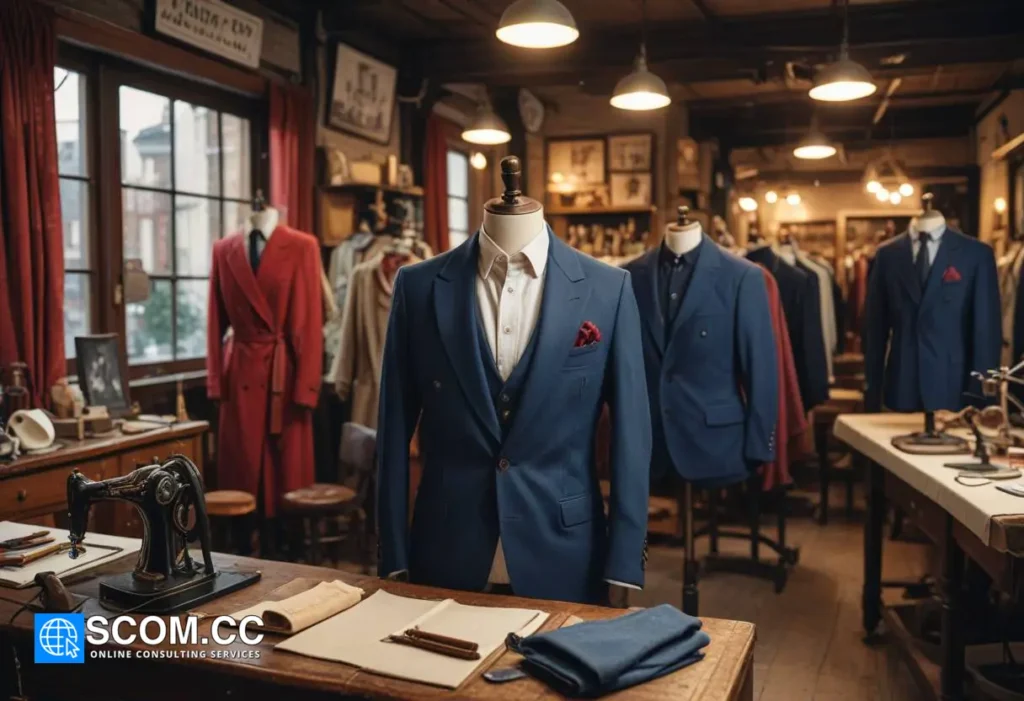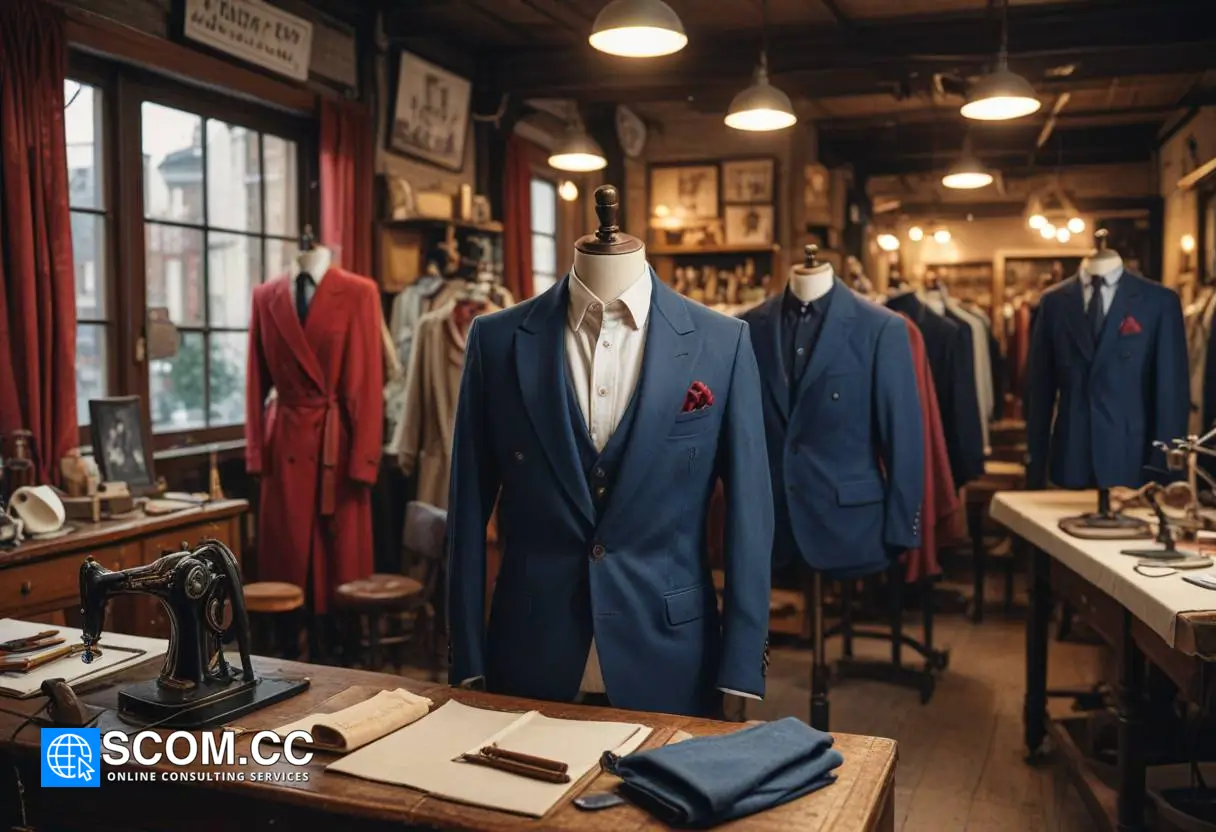The Secrets to a Flawless Tailored Jacket Fit

The Secrets to a Flawless Tailored Jacket Fit
Achieving a flawless tailored jacket fit is the pinnacle of tailoring mastery. A perfectly fitted jacket enhances both the wearer's appearance and comfort, making it a wardrobe staple. This guide will unveil the secrets to achieving an impeccable fit, from initial measurements to final adjustments, ensuring your tailored jacket exudes professionalism and elegance.
Understanding the Key Fit Areas of a Tailored Jacket
A well-fitting jacket depends on several critical areas. Mastering these aspects is essential for a flawless look.
Shoulder Fit
The shoulders are the most crucial area for a tailored jacket. The fit here determines how the jacket hangs and aligns with the wearer’s body:
- Shoulder Seam Alignment: Ensure the shoulder seams sit precisely on the edge of the shoulders. A seam that extends past the shoulders or feels tight indicates a fit issue.
- Padding and Structure: Proper shoulder padding and construction contribute to a sharp, tailored appearance. Use shoulder pads and interfacing to achieve the desired structure without excess bulk.
Chest and Body Fit
The chest and body fit are vital for comfort and style:
- Chest Width: Check that the jacket fits comfortably across the chest, allowing enough room for movement without excessive looseness. Use a tape measure to ensure there is adequate space for a shirt or sweater underneath.
- Body Drape: The jacket should drape naturally without pulling or sagging. Adjust the side seams and dart placements to achieve a smooth, contoured fit.
Sleeve Fit
The sleeves must fit well to ensure both style and functionality:
- Sleeve Length: The ideal sleeve length allows for a small amount of shirt cuff to be visible. Aim for the sleeve hem to end just above the wrist bone.
- Armhole Fit: The armholes should fit snugly without restricting movement. Ensure there is enough ease for comfortable arm movement, avoiding tightness or excess fabric.
Waist and Hip Fit
The waist and hip fit impact the overall silhouette and comfort of the jacket:
- Waist Shaping: A well-fitted jacket should have a slight taper at the waist for a flattering, tailored look. Use princess seams or waist darts to achieve this effect.
- Hip Room: Ensure the jacket provides adequate room around the hips, especially for those with a fuller figure. Avoid excessive tightness or looseness that could disrupt the jacket’s lines.
Precision in Measurements and Pattern Adjustments
Accurate measurements and precise pattern adjustments are key to achieving a perfect fit.
Taking Accurate Measurements
Accurate measurements are the foundation of a well-fitted jacket:
- Chest Measurement: Measure around the fullest part of the chest while keeping the tape measure level.
- Shoulder Width: Measure from one shoulder seam to the other across the back.
- Sleeve Length: Measure from the shoulder seam down to the wrist bone with the arm slightly bent.
- Waist and Hip Measurements: Take measurements around the natural waist and fullest part of the hips.
Pattern Adjustments
Adjusting the pattern to match the wearer’s measurements is crucial for a tailored fit:
- Adding or Removing Ease: Modify the pattern to add or remove ease as needed for the chest, waist, and hips.
- Adjusting Shoulder and Armhole: Alter the shoulder seam and armhole to match the wearer’s body shape and ensure a comfortable fit.
The Importance of Fitting Sessions
Fitting sessions are integral to refining the jacket’s fit. Here’s how to make the most of them:
First Fitting
During the first fitting, check for basic fit issues:
- Check Basic Fit: Evaluate the overall fit of the jacket, including shoulder alignment, chest fit, and sleeve length. Make initial adjustments as needed.
- Pin Adjustments: Use tailor’s pins to mark areas for adjustments and take note of any additional changes required.
Final Fitting
The final fitting ensures that all adjustments have been made correctly:
- Review Adjustments: Confirm that all previous adjustments have been correctly implemented and that the jacket fits comfortably.
- Test Movement: Have the wearer move around in the jacket to ensure there are no restrictive areas and that the jacket maintains its shape.
Professional Tailoring Techniques
Advanced tailoring techniques can further enhance the jacket’s fit and finish:
Canvas and Interfacing
The use of canvas and interfacing provides structure and support to the jacket:
- Canvas: A canvas layer adds structure to the jacket’s body and shoulders. Choose horsehair canvas or cotton canvas for a tailored finish.
- Interfacing: Use fusible interfacing to reinforce areas such as the collar and lapels, ensuring a crisp, professional look.
Hand-Stitched Details
Hand-stitching adds a personalized touch and enhances the overall quality:
- Hand-Stitched Hems and Edges: Use hand-stitching for hems and edges to provide a refined finish and ensure durability.
- Lapels and Pockets: Hand-stitch lapels and pocket flaps for a more elegant and durable finish.
Maintaining the Tailored Fit
Proper care and maintenance preserve the jacket’s fit over time:
- Proper Storage: Store the jacket on a well-padded hanger to maintain its shape. Avoid overcrowding in the closet.
- Regular Dry Cleaning: Clean the jacket according to the fabric’s care instructions to maintain its appearance and fit.
By following these secrets to a flawless tailored jacket fit, you can ensure that every jacket you create or wear will exude sophistication and comfort. With attention to detail and precision, achieving a perfect fit becomes a rewarding and attainable goal.

To explore more about tailoring, visit our Blog of Tailoring. If you have any questions or need assistance, go to our contact page. Additionally, you can find more information about tailoring and consulting at this tailoring and consulting portal.

Leave a Reply